James Bond Movie Henchmen Ranked from Worst to Best
Behind every villain in the 007 universe, there’s a henchman who lives to kill James Bond.
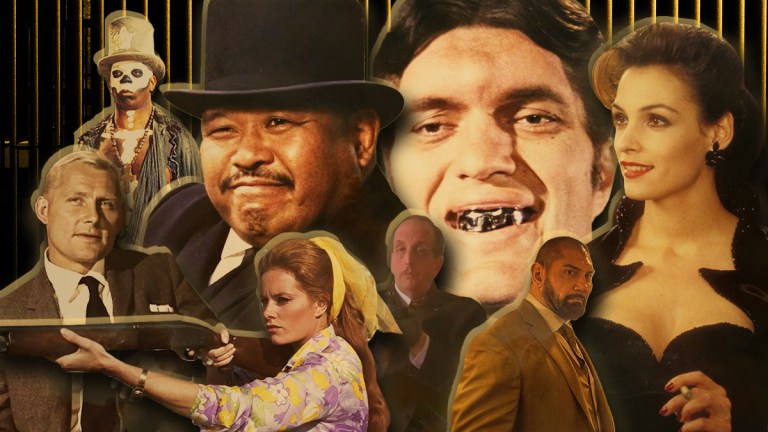
In the universe of James Bond, there are several tiers of villains. There are the primary villains, of course, the mad geniuses like Ernst Stavro Blofeld, Auric Goldfinger, Karl Stromberg, or Max Zorin, who plot to take down financial institutions, governments, military installations, or even the entire world. Sometimes it’s even all of the above Next, however, are the secondary adversaries who may support the main villain in their plans but are often either in it for their own financial gain (as opposed to world conquest), or because they’re in trouble, and this is their only way out. Think of Pussy Galore from Goldfinger, Milton Krest from Licence to Kill, General Ouromov from GoldenEye, Professor Dent from Dr. No… and the list goes on and on.
And then there are the henchmen who are there for one sole reason: to kill James Bond, or in the words of one famous villain, “See that some harm comes to him.” These tertiary villains are agents, assassins, or hired killers—many of them with a strange physical quirk, a distinctive appearance, or a trademark way of committing murder—who may or may not have some reason or motivation for the life they lead, but are part of whatever movie they’re in simply to send 007 to an early grave.
This last group is what we’re focusing on with the list. We’re sure we missed someone here and there (every Bond movie has more than its share of bad guys), and to be sure, not all of them are especially integral to the story. But here are the ones we remember the most, ranked in order of how deadly or memorable they are.
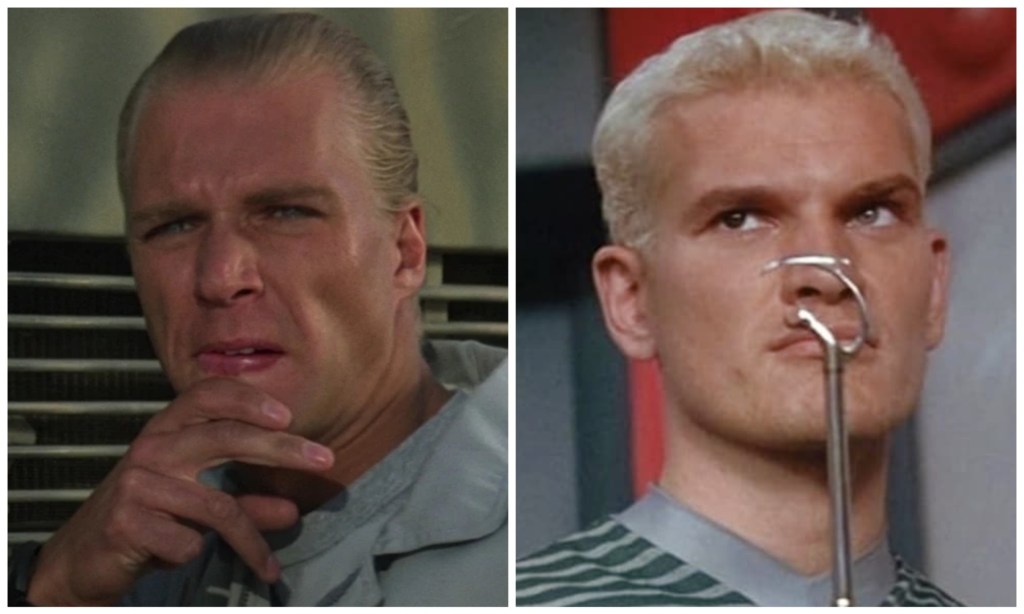
23. Stamper/Necros (Tomorrow Never Dies/The Living Daylights)
Let’s face it, can you tell the difference between these guys? Both are part of a long line of vaguely Aryan-looking, mostly silent slabs of sculpted beefcake with no discernible personalities, there to either tussle with Bond or slaughter anyone who gets in their bosses’ way. In the case of Stamper (Götz Otto), he works for homicidal media mogul Elliot Carver (Jonathan Pryce). Meanwhile Necros (Andreas Wisniewski) is employed by… whoever the villain was in Timothy Dalton’s rather forgettable debut as 007.
Stamper is an expert at torture while Necros is ostensibly a master of disguise. Switch them between movies and you’d barely notice the difference. That’s how bland these guys are.

22. Chang (Moonraker)
Manservant to space station builder and potential world-ending megalomaniac Hugo Drax (Michael Lonsdale), Chang (Toshiro Suga) is given one job by his boss: “Look after Mr. Bond. See that some harm comes to him.” Chang’s first big idea is to trap Bond in a centrifuge chamber and whirl him around until he is turned to jelly. When that doesn’t work out, Chang attacks Bond at the top of the St. Mark’s clock tower in Venice, only for 007 to send the assassin crashing through the stained glass to the street below.
Basically, Chang is so non-descript and so bad at his job that once he’s dead, Drax has to give a call to the previous movie’s hired killer to take his place. Actually, we’re betting he placed that call even before Chang was dead. If anyone deserved to get fired, and we know what that means in the 007 universe, it’s poor old incompetent Chang.

21. Zao (Die Another Day)
Zao (played by Rick Yune) is the right-hand man of Gustav Graves/Colonel Moon (Toby Stephens) in Pierce Brosnan’s 2002 swan song, Die Another Day. A North Korean smuggler and all-around nasty piece of work, he’s disfigured by 007 when the latter interrupts Zao’s diamond smuggling operation with an explosion embedding a bunch of the gems painfully in Zao’s face.
Later, when Zao is getting DNA therapy to assume a European identity, Bond interrupts again, leaving Zao’s skin chalk-white. No wonder he hates the British agent and craves killing him, although that doesn’t quite work out, as Zao is impaled by an ice chandelier (don’t ask) near the end of the film by, of course, Bond.
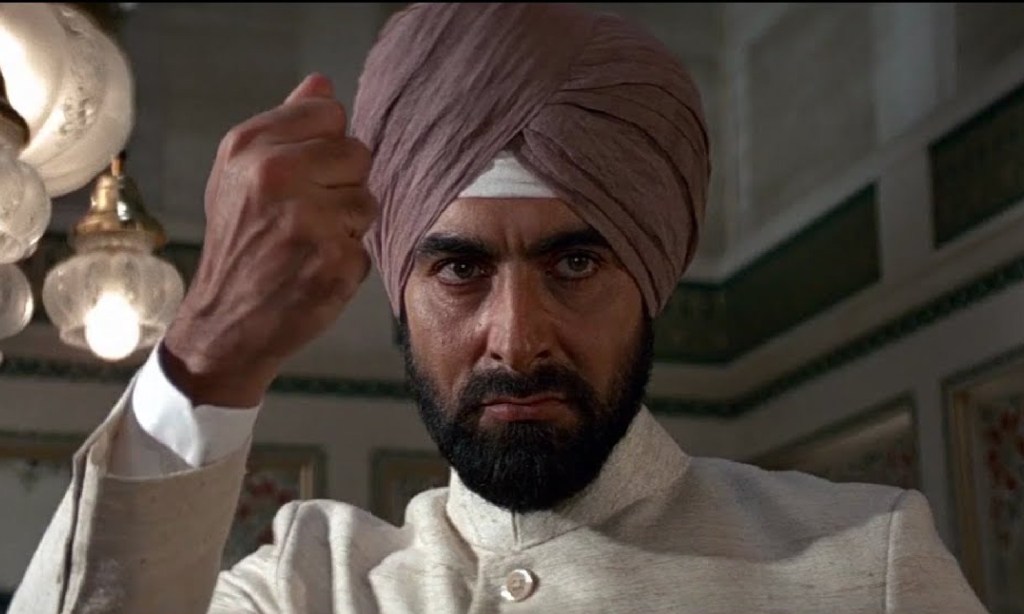
20. Gobinda (Octopussy)
Not only is Octopussy one of our least favorite Bond movies, but it’s also home to some of the series’ weakest adversaries. Main villain Kamal Khan (Louis Jordan) fails to make much of an impression, but his muscle, the staggeringly tall Gobinda (Kabir Bedi) doesn’t do much to stand out either. Sort of a half-baked cross between classic henchmen Jaws and Oddjob (more on them later), packed into an imposing Indian frame, Gobinda is as good at dealing out death as he is at crushing dice in his bare hands.
Maybe if he was in a more interesting movie he might be a more memorable henchman, but otherwise he’s just a humorless, personality-free killing machine. He meets his death fighting Bond atop a plane—the only time he oh-so-slightly hesitates to do his job.
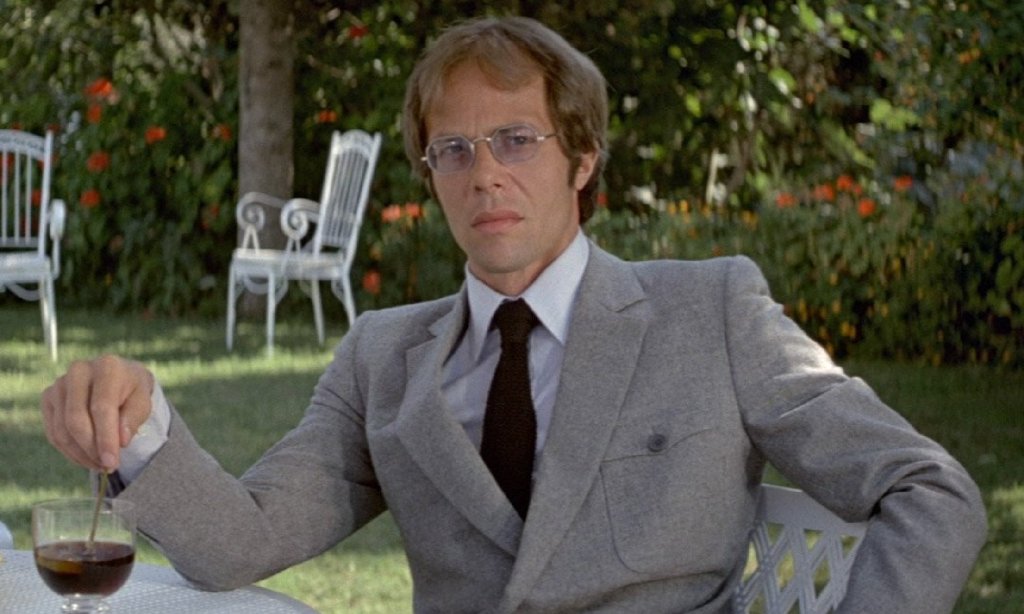
19. Locque (For Your Eyes Only)
Emile Locque (Michael Gothard) is an assassin in the employ of Aris Kristatos (Julian Glover), the chief villain of Roger Moore’s fifth outing as 007, For Your Eyes Only. Distinguished by his octagonal glasses, Locque is really notable not for his own actions but for providing Moore with one of the best moments in his entire seven-film run as Bond.
After pursuing Locque to avenge the murder of Countess Lisl (the late Cassandra Harris, then-wife of future 007 actor Pierce Brosnan), Bond traps the killer in a car perched on the edge of a cliff. In a move that shocked fans of Moore’s jauntier approach to the character, 007 violently kicks the car, sending Locque plummeting to his death. It’s a cold-blooded moment worthy of Ian Fleming, and we’re sorry Moore didn’t do more of them. As for Locque, no great loss there, although Gothard’s career, which ended tragically when he took his own life in 1992 at the age of 53, included standout roles in Hammer’s Scream and Scream Again, Ken Russell’s The Devils, and Tobe Hooper’s Lifeforce.
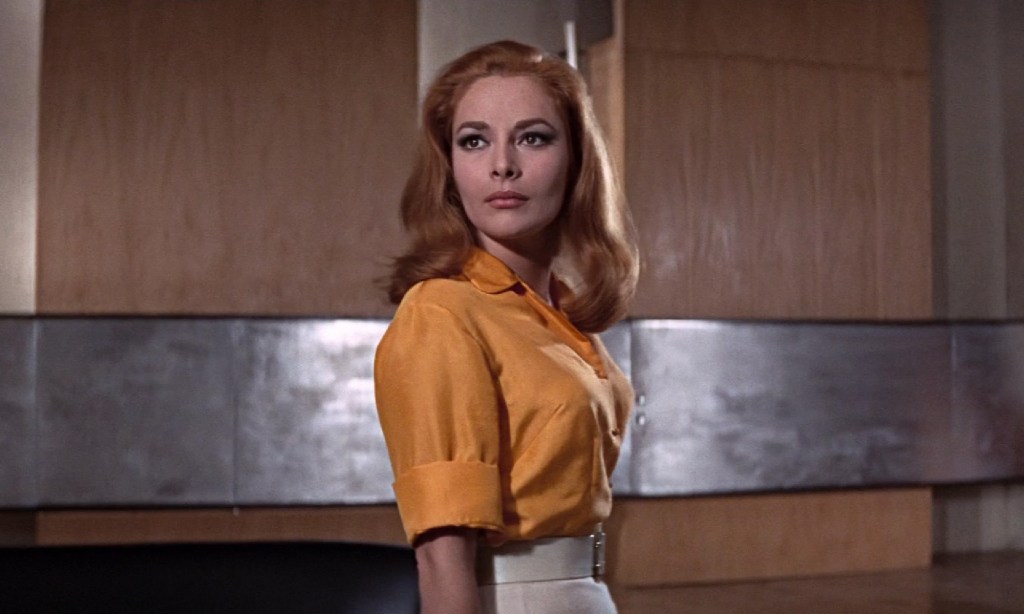
18. Helga Brandt (You Only Live Twice)
Statuesque, lovely, red-haired, and amoral, this undercover SPECTRE agent—who poses as a secretary for the organization’s chief Japanese asset, Osato (Teru Shimada), in Sean Connery’s fifth outing as 007—is, let’s face it, more or less a knockoff of Thunderball’s fiery Fiona Volpe, who appears later on this list.
That’s not to say that Helga, played by German actress Karin Dor, doesn’t have her charms. She’s got that classic combination of allure and menace, and she’s just as interested in seducing Bond as she is in dispatching him to an early (and permanent) retirement. Speaking of which, she and Osato throw each other under the bus after they fail at the latter, so an angry Blofeld (Donald Pleasence) turns Helga into a buffet for a pool full of piranhas. Fiona Volpe would never have let that happen to her.
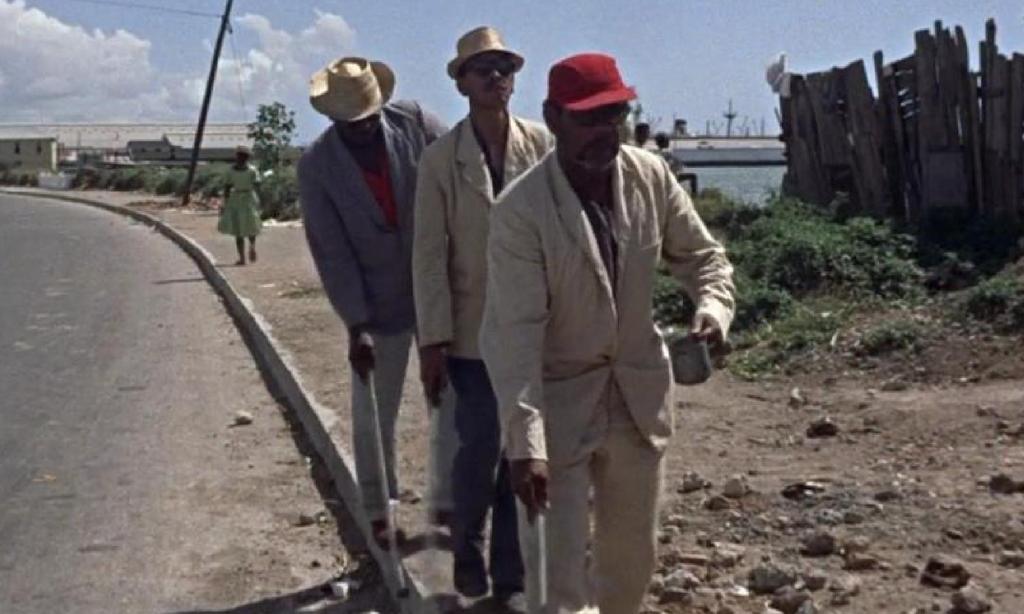
17. The Three Blind Mice (Dr. No)
The Three Blind Mice have the honor of being the first henchmen we ever see in a James Bond movie—in fact, they’re the first characters we see, period, as animated versions of them stroll out of the credits and into the first live-action shot in the picture.
Although they’re disguised as three blind men who march around Kingston together with their walking sticks, the trio (played by Eric Coverley, Charles Edghill, and Henry Lopez) are actually killers in the employ of Dr. No. They first knock off MI6 agent Strangways, which brings Bond down to Jamaica to investigate. They miss their first attempt to kill 007, and their second ends with their car going off a cliff. Even if they’re not really blind, they end up not having a great eye for their target.
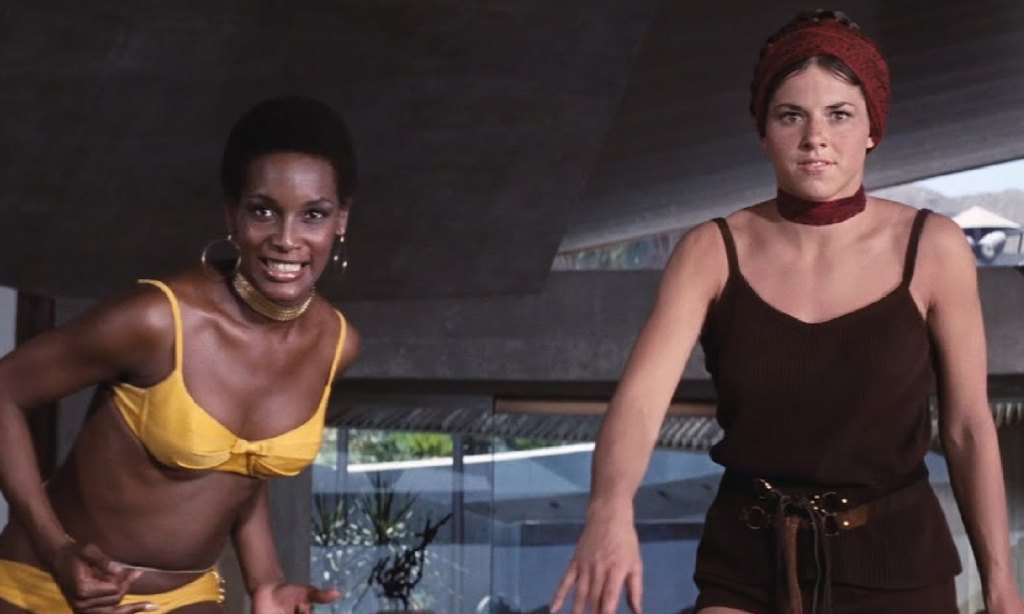
16. Bambi and Thumper (Diamonds are Forever)
Hey, if you were Bond (Sean Connery, in this instance) and you met these two voluptuous acrobats and they were eager to tussle, you’d probably go for it. But Bond underestimates these bountiful beauties quite badly at first, since Bambi (Lola Larson) can crush a dude with her legs (shades of another, more famous villainess whom we’ll get to) and Thumper (Trina Parks) has nails that can scratch someone’s eyes out. Plus they’re both incredibly strong and agile, but not quite enough to beat Bond, naturally.
In fact, the pair give in quite easily just by having their heads held underwater, and that’s the last we see of them in Connery’s final official outing as 007. Just as well, these two ladies are so thinly sketched out that we don’t even know their real names, or what they think of Bond’s horrid pink tie.

15. Dario (Licence to Kill)
In keeping with the overall darker, violent nature of Licence to Kill, Timothy Dalton’s second and final outing as 007, the character of Dario is as cruel and vicious as his boss, the drug lord Sanchez (Robert Davi). After Bond and Felix Leiter (David Hedison) capture Sanchez early in the film, only for him to escape, Dario and a team of thugs kidnap Leiter and his new wife. Mrs. Leiter is, horribly, raped and murdered, while Leiter is maimed after being lowered into a shark tank.
Dario is played by a young, almost baby-faced Benicio del Toro, who brings his disarming and formidable presence (even back then) to a role of almost pure evil. Dario and Bond clash again later in the film, atop a giant shredder, and even though Dario tries to drop 007 into the machine, it’s Dario who ends up being turned into spaghetti instead. A fitting end for a minor but thoroughly malicious foe.
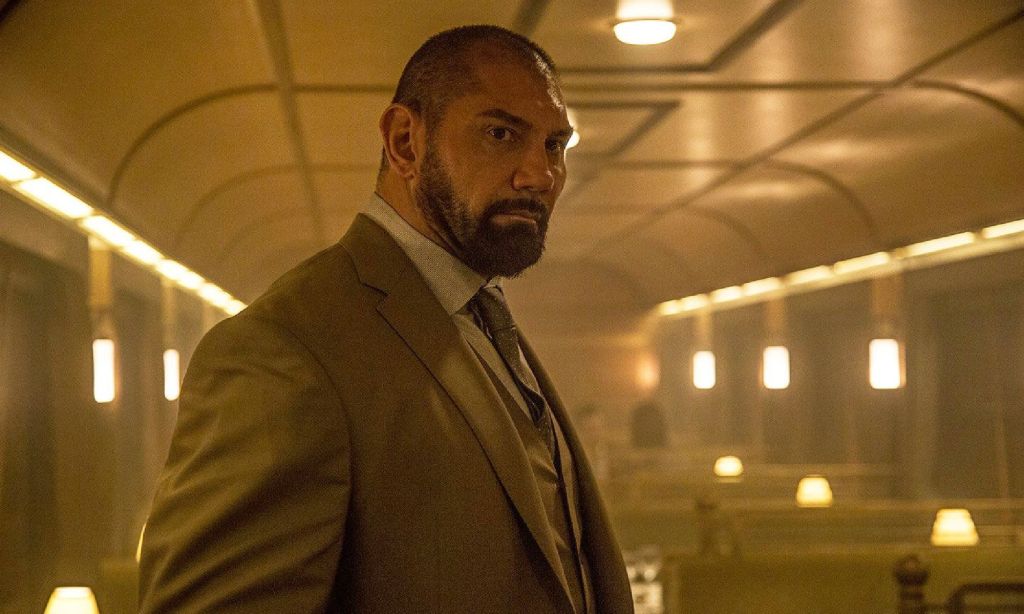
14. Mr. Hinx (Spectre)
It’s really strange to think that there were practically no henchmen in the traditional sense in any of Daniel Craig’s first three Bond movies. It was another 007 trope that the Craig era subtly subverted, although his fourth entry, Spectre, was a tentative (and divisive) step in the direction of bringing the most recent run of Bond entries a bit closer to previous ones.
That’s where Mr. Hinx comes in. Shaped in the mold of a classic 007 assassin, he has almost no dialogue, he’s unstoppable in his mission to kill Bond, and he’s possessed of brute strength and a kind of animal cunning. He wears expensive suits, which we imagine is supposed to be some sort of character touch (as are the bizarre sharp talons on his thumbs), but his main asset is that he’s played by the always great, charismatic Dave Bautista. That’s just enough to get Mr. Hinx a bit higher on this list, because otherwise he wouldn’t make much of an impression.
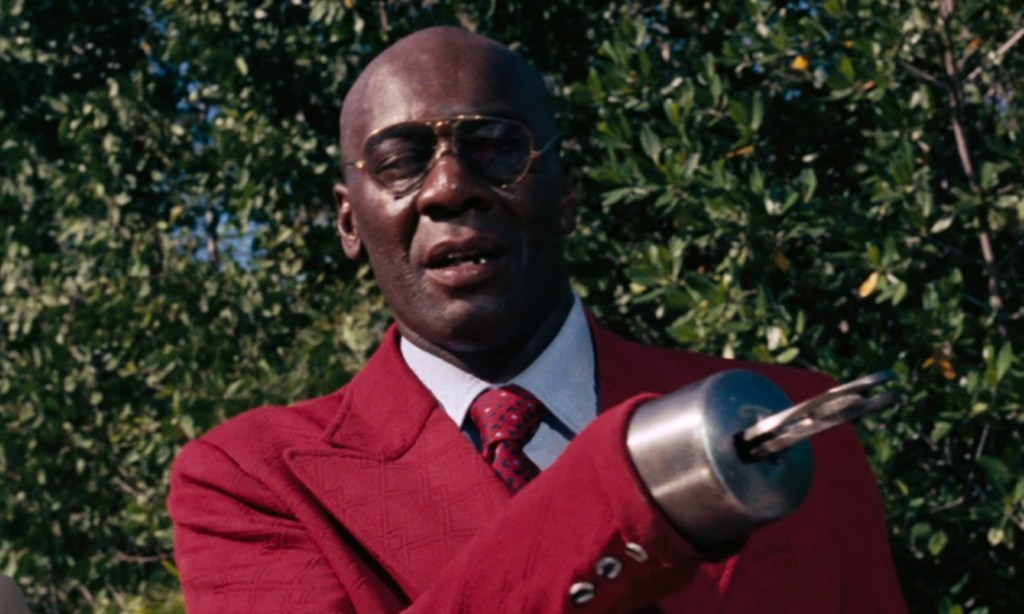
13. Tee Hee (Live and Let Die)
Don’t let the name fool you. While Tee Hee Johnson (Julius Harris) sports an innocuous name, an infectious laugh, and a jocular nature, he is one mean mother. As the, pardon the expression, right-hand man to Kananga/Mr. Big (Yaphet Kotto), he happens to sport a metal arm with a nasty-looking hook on the end, the better to threaten to snip off first Bond’s finger and then “more vital organs” on the orders of Kananga.
Thankfully, it never gets that far, although Tee Hee then brings 007 (Roger Moore in his debut) to a crocodile farm—the same one where a resident bit off Tee Hee’s arm—with the intent of serving him as lunch. Bond gets out of that scrape as well, but he and Tee Hee meet one last time on a train where Bond finally gets the upper hand (sorry) and sends Tee Hee out a window, leaving only the metal arm behind.
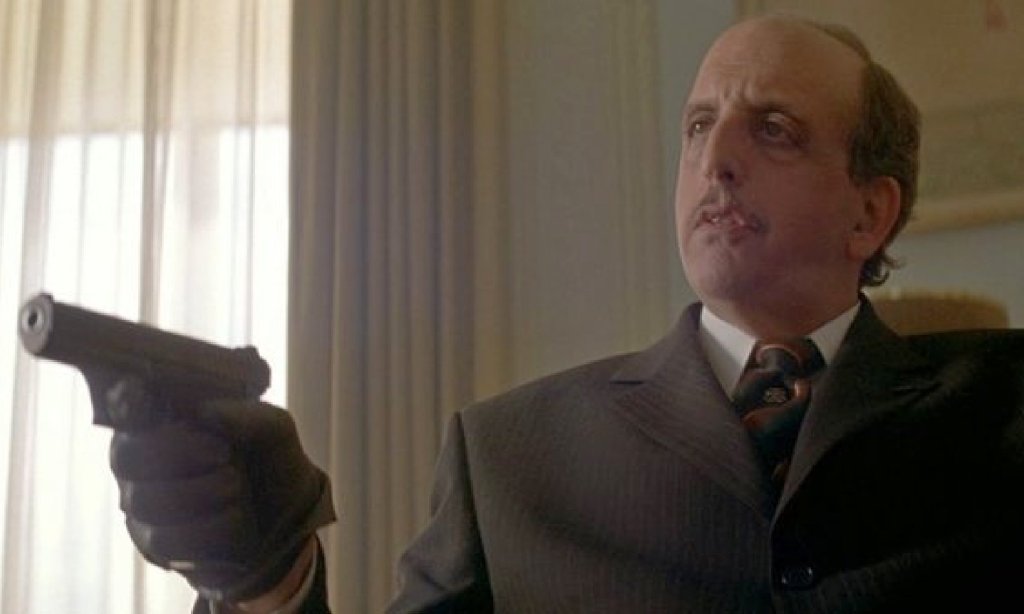
12. Dr. Kaufman (Tomorrow Never Dies)
Dr. Kaufman (the late, great Vincent Schiavelli) basically has one scene in Pierce Brosnan’s second 007 film, but he makes the most of it and gives Brosnan one of his best “purist” moments as well. When Elliot Carver (Jonathan Pryce) finds out that his wife Paris (Teri Hatcher) has reignited her previous relationship with 007, he sends Kaufman to kill them both and make it look like a murder-suicide. After executing Paris in 007’s hotel room, Kaufman brags to a returning Bond about his prowess as an assassin and his embrace of torture as a hobby, clearly relishing the moment.
But the tables quickly turn and Kaufman finds himself looking at the business end of 007’s gun. “Wait, I’m just a professional doing a job!” he beseeches 007. “Me too,” says Bond coldly, shooting Kaufman point-blank in the head. It’s a dark moment of grief and vengeance for Brosnan’s 007, who often leans slightly toward the more flippant Roger Moore end of the scale. So thanks for that, Dr. Kaufman.
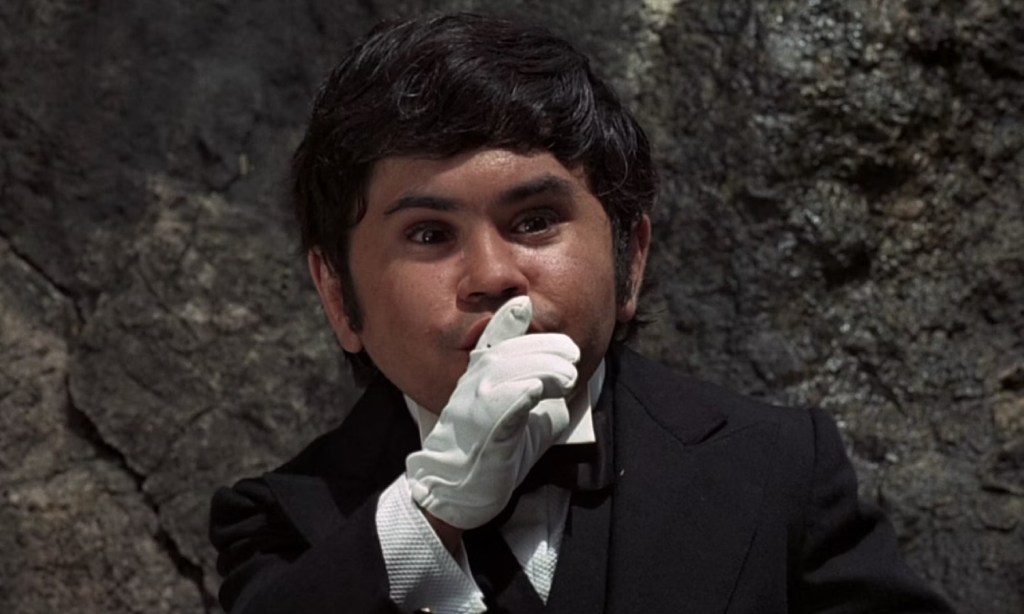
11. Nick Nack (The Man with the Golden Gun)
The diminutive Nick Nack (Hervé Villechaize) and his employer, Francisco Scaramanga (Christopher Lee), have perhaps the oddest relationship of any Bond villain and henchman. While Nick Nack serves as all-around manservant and loyal assistant to Scaramanga (the “man” of the title), he also stands to inherit his boss’ entire estate should Scaramanga die. So Nick Nack occasionally hires assassins to test Scaramanga’s world-class skills, both to keep the latter sharp and perhaps one day catch him off-guard.
Other than that, Nick Nack supports Scaramanga in all his endeavors, which includes, of course, killing Bond. They don’t succeed at the latter, and even Nick Nack’s surprise attack following the death of Scaramanga is a failure. Interestingly, he’s one of the few henchmen in the series who survives by the end of the film, although his ultimate fate is unknown.
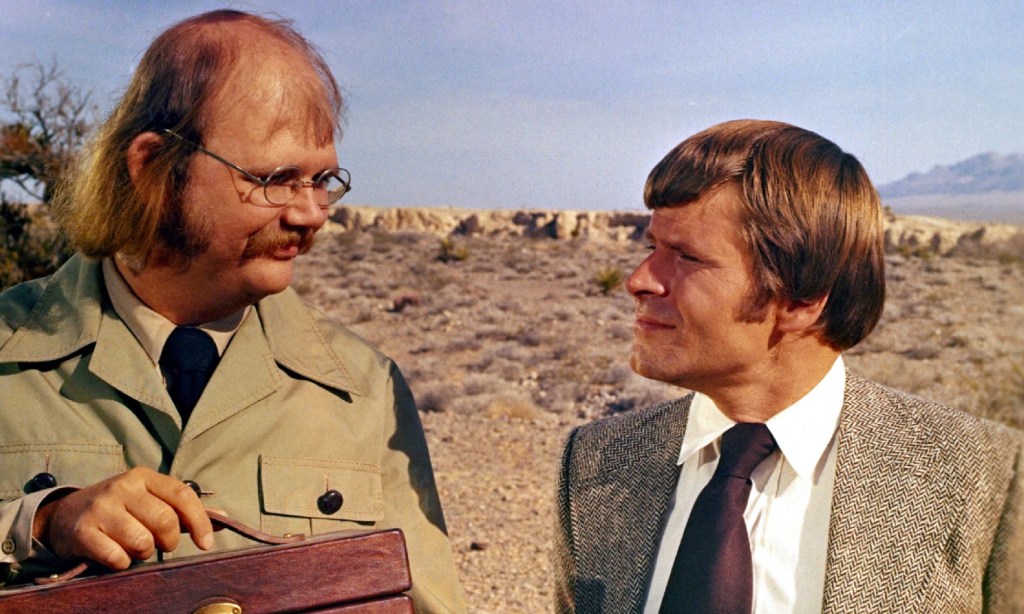
10. Mr. Kidd and Mr. Wint (Diamonds Are Forever)
Some 50 years before Q (Ben Whishaw) came out as gay in 2021’s No Time to Die, the 1971 Sean Connery entry Diamonds Are Forever was the only Bond film to feature gay characters in prominent roles in the proceedings (although there were strong hints that Pussy Galore was somewhere in the LGBTQ community in Goldfinger). Now, this was 1971, and views on homosexuality were fairly regressive at the time. But Mr. Kidd (Putter Smith) and Mr. Wint (Bruce Glover) hold their own: They’re formidable, cold assassins who efficiently kill off a number of people in the film, they deliver some amusing one-liners, and they keep the kind of campier behavior that would have been par for the course back then fairly limited.
The movie versions of Wint and Kidd are loosely based on characters going by the same names in Ian Fleming’s novel, although they are far more brutal in the book and only suspected of being gay by Bond. The fact that Diamonds Are Forever definitively characterized them as such was groundbreaking for the time (even with the occasional cringey moment), and they remain arguably the most entertaining aspect of a rather tired movie.
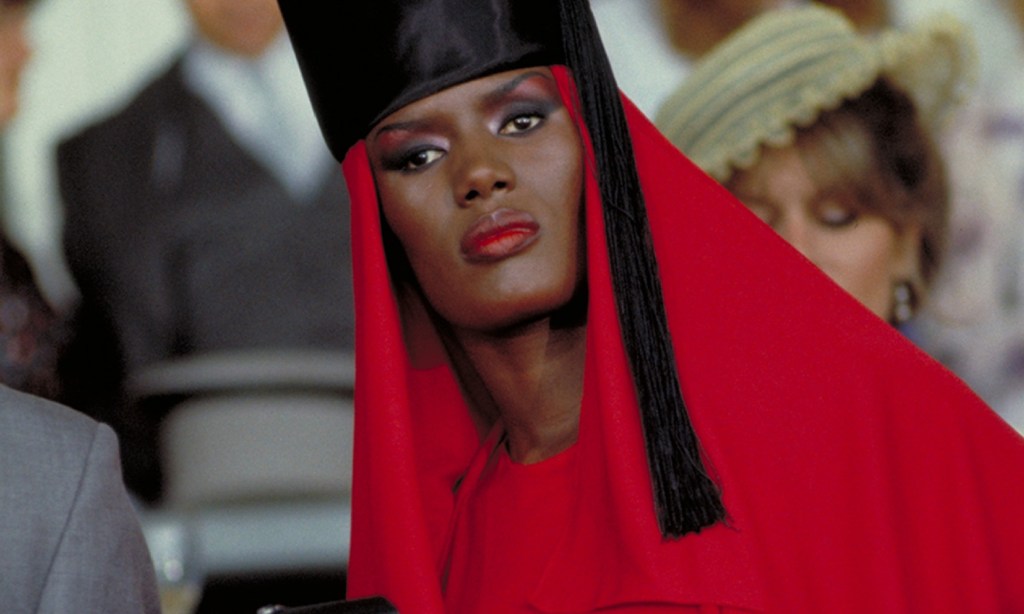
9. May Day (A View to a Kill)
Portrayed by Grace Jones and one of the few highlights of the otherwise dreary 1985 film that marked Roger Moore’s final outing in the tux, May Day is unique among Bond villains. She is perhaps the only woman in the entire franchise, good or evil, who possesses the kind of incredible physical strength usually reserved for male henchmen. She can literally toss grown men over her head and might be the only sexual partner that Bond has been afraid of hooking up with.
The effortlessly stylish May Day is also one of the few henchmen (henchpersons?) to have a change of heart about her job. After learning that her boss and lover Max Zorin (Christopher Walken) has left her to die in a mine explosion, she switches sides to help 007 foil Zorin’s plans, sacrificing her own life in the process. In this case, the villain lives just long enough to see herself become a hero.
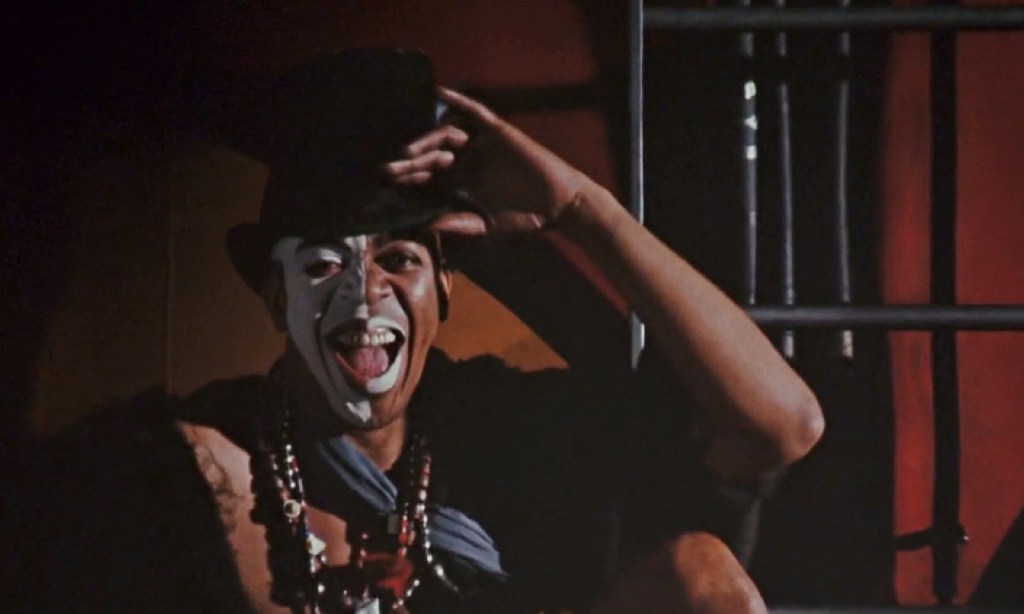
8. Baron Samedi (Live and Let Die)
The 007 franchise has only ever made one (half-hearted) venture into the realm of the supernatural, and it was with Roger Moore’s 1973 debut in the role, Live and Let Die. The film takes place partially in the voodoo culture of New Orleans and Kananga’s island of San Monique. While the film itself isn’t an especially bright spot in the Bond canon, Baron Samedi—played by the late, legendary actor, dancer, and choreographer Geoffrey Holder—is one of the series’ more intriguing henchmen.
Samedi seems to work for Kananga, ostensibly to create fear among the people of San Monique by being a living manifestation of the Baron Samedi spirit, but also operates on his own as well. His true identity is never disclosed, and there seem to be multiple versions of him. Most significantly, after Bond appears to kill him by throwing him into a coffin full of poisonous snakes, he’s seen sitting on the front of the train carrying Bond and Solitaire at the end of the movie, laughing maniacally. Since continuity has never been an important part of the 007 series, we never see him again, but he remains one of Bond’s eerier and more enigmatic antagonists… and the one who got away.
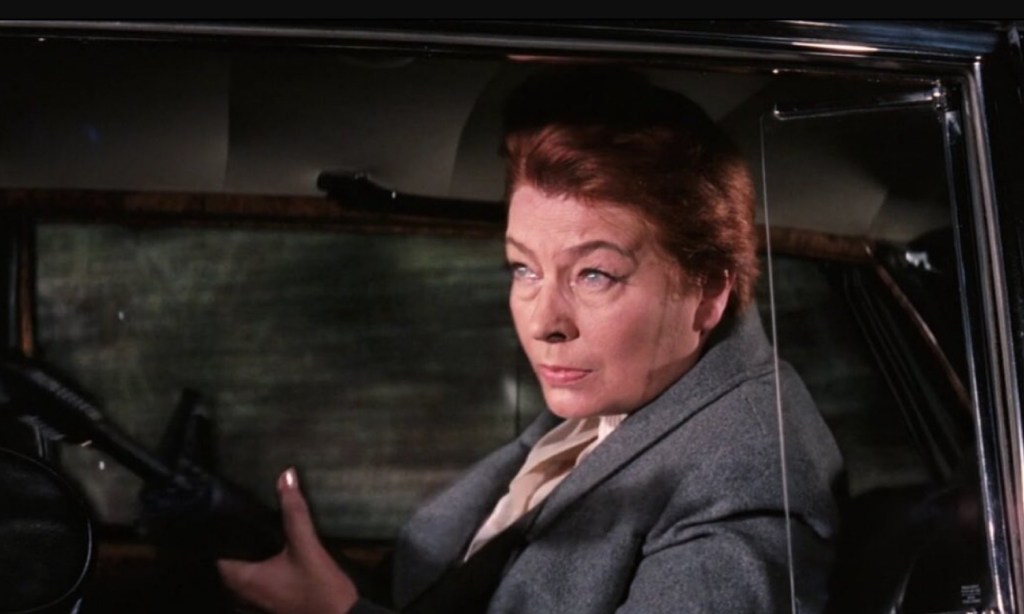
7. Irma Bunt (On Her Majesty’s Secret Service)
Harsh, humorless, and dedicated to Blofeld’s (Telly Savalas) plan to wage bacteriological war on the world by sending out beautiful women carrying vials of death, Irma Bunt (German actor Ilse Steppat, in her only English-language role) is one den mother of doom you don’t want to mess with. She is stern and controlling, ruthless and cunning, and won’t hesitate to kill.
Bunt is most infamous for the end of OHMSS, as she sprays bullets from a car driven by Blofeld at Bond’s vehicle, which is pulled over to the side of the road. Bond lives, but his new bride Tracy (Diana Rigg) is killed, literally minutes after they leave their wedding reception. It remains the most shocking ending in 60 years of 007 movies. Steppat was supposed to return as Bunt in the next film but when Steppat died of a heart attack just days after the premiere of OHMSS, the character was written out.
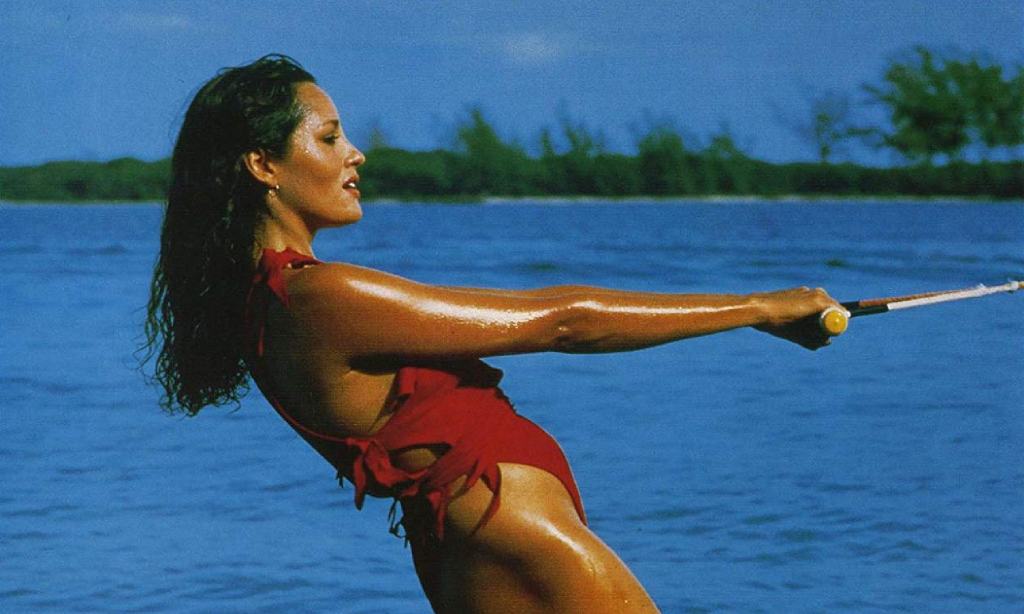
6. Fatima Blush (Never Say Never Again)
This bombshell SPECTRE agent, played with fire, fury, and unbridled sexiness by Barbara Carrera, makes the list even though her movie, Never Say Never Again, is not part of the official 007 series overseen by Eon Productions. The story of how Never Say Never Again came into being is a long, complicated one, but in simplest terms, it’s a remake of Thunderball for which Sean Connery was lured back to play Bond one last time—going head-to-head with Roger Moore’s Octopussy at the box office back in ’83.
As for Fatima, she’s a loose remake herself of the next character on this list, and Carrera vamps it up for all she’s worth, taking extreme pleasure in causing chaos, committing murder, or bedding Bond (their tryst on board a boat is one of the hottest in any Bond film, canon or not). Her outfits are fabulous and her demise is also considerably more explosive than that of her predecessor. It’s her own self-love that does her in, and Never Say Never Again noticeably sags after her exit.
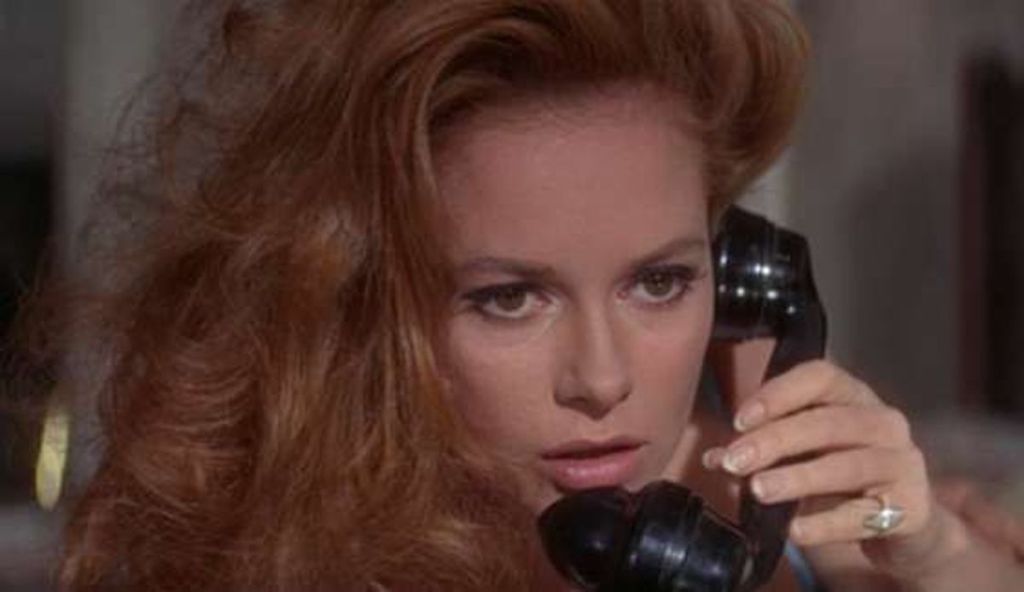
5. Fiona Volpe (Thunderball)
Although Thunderball is considered a 007 classic, the dirty little secret of the film is that it’s actually a fairly dull affair, especially since main villain Emilio Largo is such a wet noodle of an antagonist. Thank the universe, then, for Fiona Volpe (Luciana Paluzzi). Not only is she a red-headed stunner in a movie full of gorgeous Bond women, but she is one of the series’ best femme fatales. Her agency and authority within SPECTRE itself make one wish that she was the chief baddie and Largo a mere lackey.
Volpe proceeds ruthlessly through the steps of carrying out SPECTRE’s master plan—hijacking two atomic bombs with which to blackmail the world—and does so with relish, deadly accuracy, and no moral qualms whatsoever. She also laser-focuses on getting rid of Bond but has no problem hopping between the sheets with him along the way. Unlike some of the series’ more cringe-worthy Bond ladies, she is not reformed by the magic of having sex with 007. Her eventual end is relatively subdued, but like her non-canon heir Fatima Blush, her absence is keenly felt in Thunderball once she’s off the screen.

4. Red Grant (From Russia with Love)
Remember those blond, bland, beefcake types we mentioned way back at the top of this article? Well, here’s the original—except none of his later imitators can hold a candle to the frightening intensity and menace of SPECTRE agent Donald “Red” Grant. Played to perfection by Robert Shaw (later to achieve immortality as Quint in Jaws), the cold-blooded Grant possesses raw strength, fierce intelligence, and a sadistic streak that has made him one of the most memorable evildoers in the Bond series, in one of the very best of the films.
Grant is in some ways a mirror image of Bond: a “blunt instrument,” to use the words a different M would deploy to describe James Bond. In some ways the only difference between the men is who they work for, although Grant does not know how to pair the right wine with dinner. Their fight aboard a speeding train—a claustrophobic, in-your-face, violent clash of titans in a tiny space—remains one of the greatest sequences in the entire 007 canon.
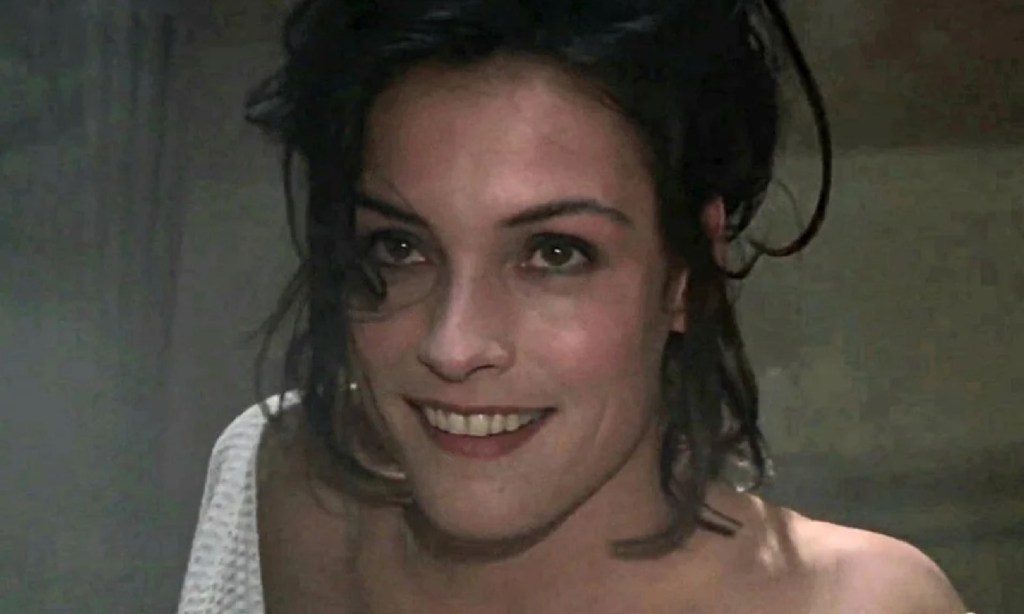
3. Xenia Onatopp (GoldenEye)
We suppose that if you have to die, there are worse ways to go than between the thighs of the gorgeous, deadly Russian assassin Xenia Onatopp, played with lethal sexiness by Famke Janssen. When the Bond franchise came back in 1995 after its longest break to that point (six years) with a new star (Pierce Brosnan), a female M (Judi Dench), and at least a nod to whether 007’s creaky appeal still played in a post-Cold War world, some things still never changed. Xenia was in many ways the ultimate 007 femme fatale, topping (so to speak) all the others who had come before her.
Yes, Xenia’s most famous way to knock off her victims is by crushing them between her legs while getting busy with them, but she also achieves orgasm while mowing down a roomful of people with a machine gun, proving simultaneously that the 007 franchise was still willing to be politically incorrect at times and that its women had enough agency to get off, even without Bond. Xenia’s greatest source of pleasure is rendering men extinct, and out of all the female adversaries Bond has ever faced, she’s the one we always thought might be worthy of starring in her own movie.
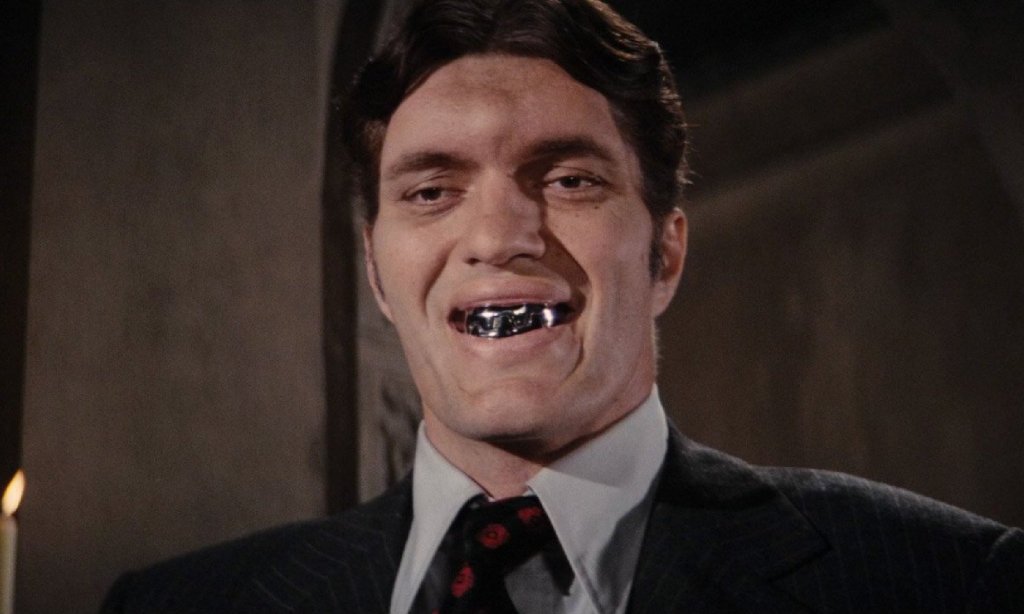
2. Jaws (The Spy Who Loved Me, Moonraker)
Believe it or not, even though the plot of The Spy Who Loved Me—Roger Moore’s third and best outing as Bond—has absolutely zero to do with the story of the novel upon which it’s based, the seed of the character known as Jaws (Richard Kiel) can be found in a killer in the book named Sal “Horror” Horowitz, whose teeth are capped with steel. Thus was born the idea for one of the greatest and most famous henchmen in 007 history: a seven-foot-tall, monstrously powerful, nearly indestructible killer who uses his mouthful of razor-sharp metal teeth to tear out his victims’ throats.
Jaws was so popular that they changed the ending of TSWLM to keep him alive, allowing him to return in Moonraker where he’s hired by Hugo Drax to dispose of Bond. Notoriously, he falls in love in that film and his presence is played more for laughs, with the hulking assassin even switching sides at the end to help Bond defeat Drax. Despite this rather disappointing turn of events, Jaws is still a major factor in the success of his debut film, and remains perhaps the iconic henchman of the Roger Moore era.
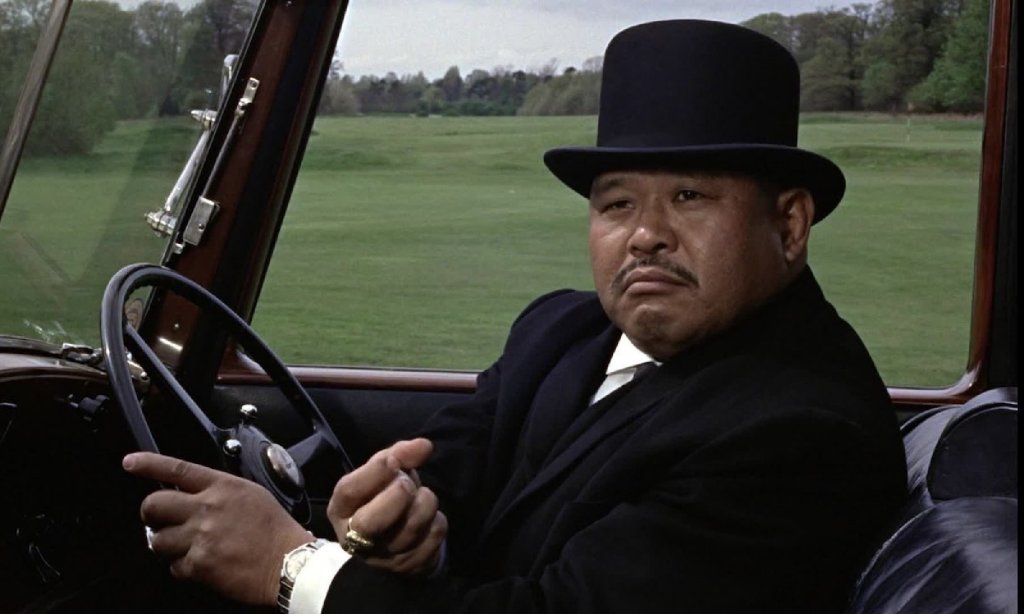
1. Oddjob (Goldfinger)
Goldfinger not only perfected the template for all 007 films to come, but it introduced some of the most enduring elements of the series, including the kind of henchman we’ve been mostly talking about here. Oddjob (Harold Sakata) is the definition of the character: silent, preternaturally strong, intensely loyal to his employer, and possessed of both exceptional fighting/killing skills and a trademark methodology. In this case, it’s Oddjob’s precision with his steel-rimmed bowler hat. If he hurtles it at you, a broken neck or a sliced jugular is surely in your immediate future.
It’s poetic justice that Oddjob’s hat also serves as the means of his own death. During a climactic battle with Bond, a a snapped cable sends a high-voltage charge through the rim of the hat, painfully electrocuting the fiend when he tries to retrieve his weapon. Up until that moment, it’s truly in doubt whether Bond will be able to defeat this Korean mountain of a man. Just as Goldfinger remains the archetypal James Bond adventure, Oddjob is the henchman against whom all others are measured. We tip our hat to him.
James Bond will return.
